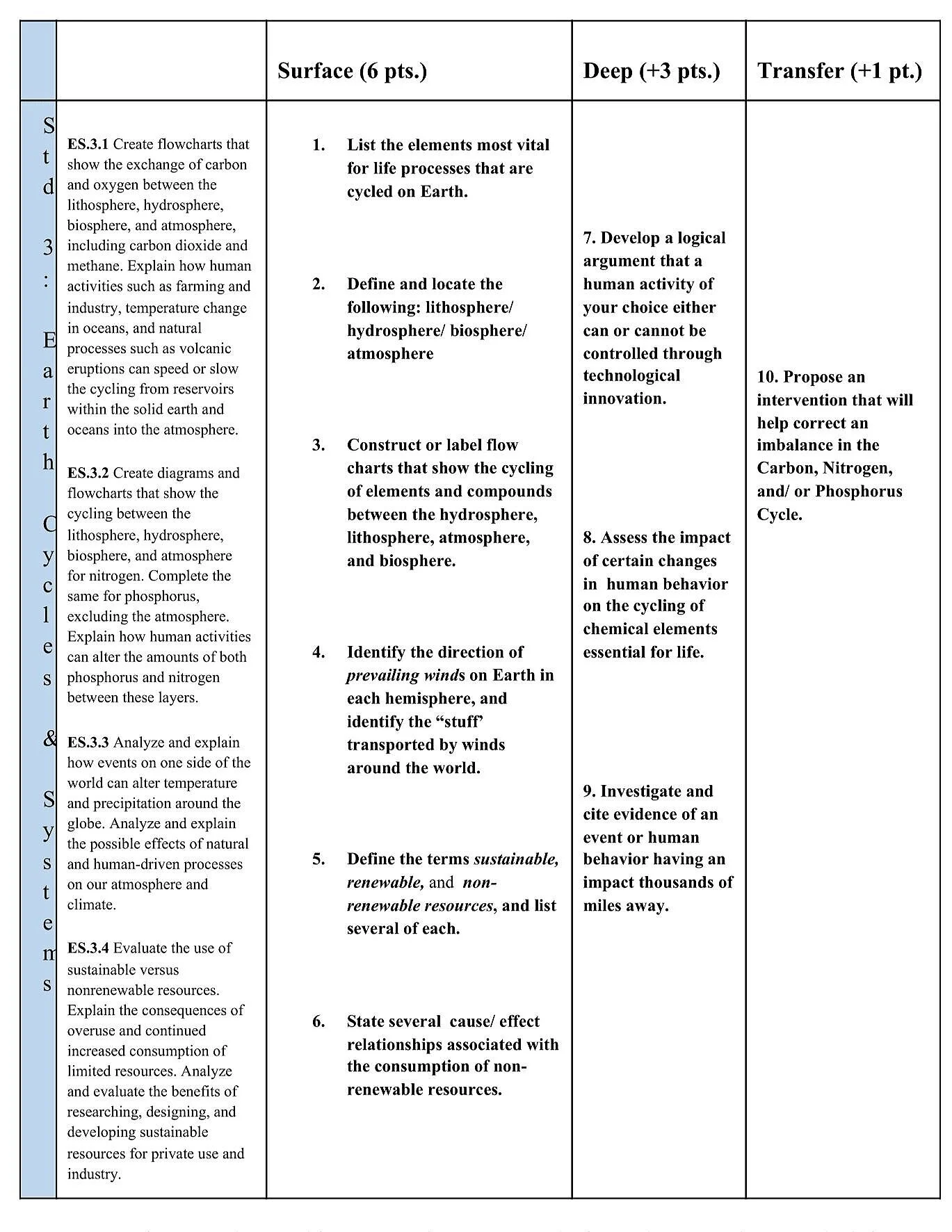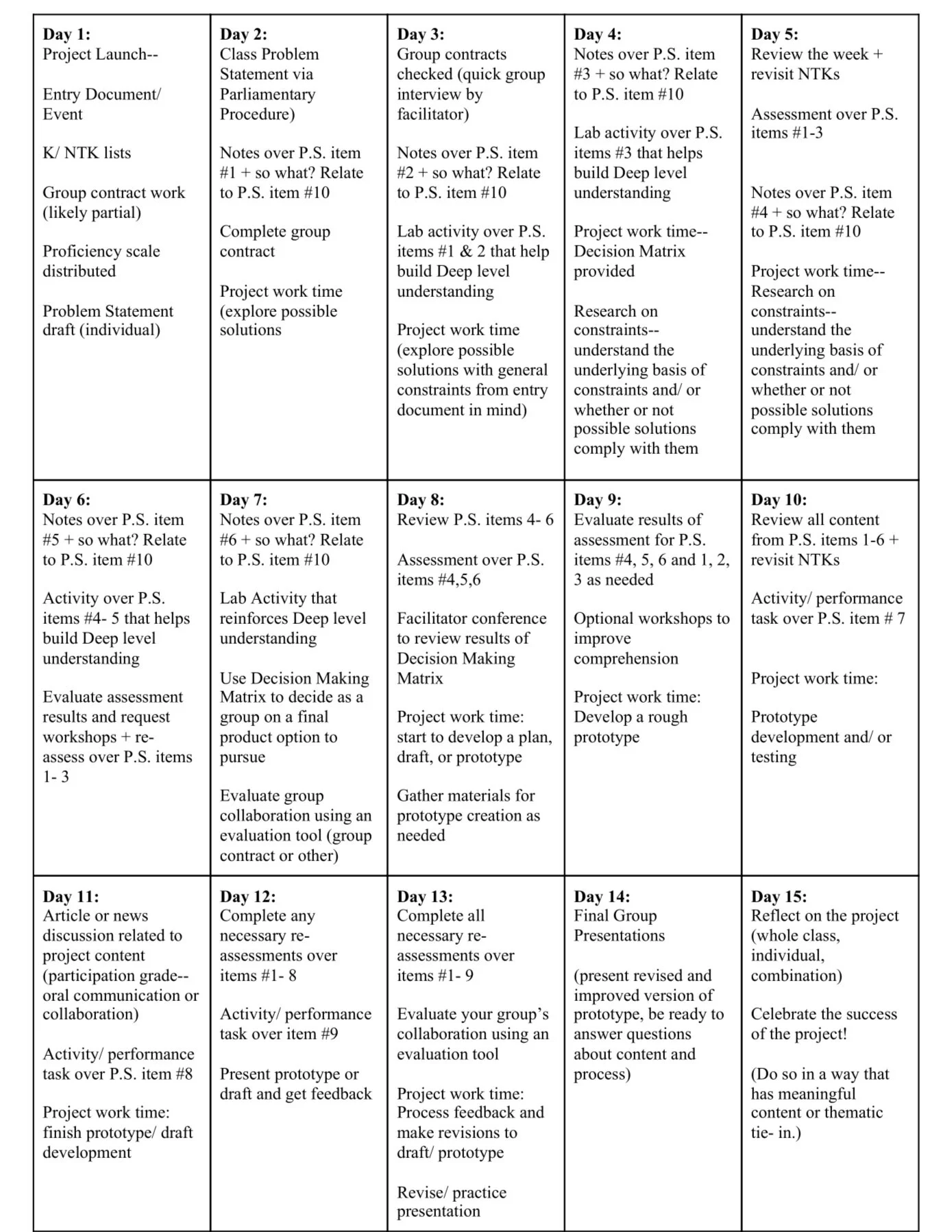BACK TO PROJECT BASED LEARNING BLOGS
By: Andrew Larson, High School PBL Facilitator
Columbus Signature Academy New Tech High School
Columbus, IN
When I think back on my days as a younger teacher I remember believing in my heart that I wanted every day to feel different. I wanted to keep kids on their toes, surprise them, and excite them. As such my classes lacked structure. Neither my assessment system nor my day to day instruction had a foundation of developing routines or of building good habits.
I just finished reading a great book that has been inspiring and a touch validating. In Atomic Habits, James Clear offers his take on the fact that some people believe that following strict routines makes them “boring people.” But Clear’s point of view is more in line with my (cough) older and more well defined belief that routine and good habits are the exact opposite of boring. He instead maintains that when certain tasks become habituated to the point where you don’t even have to think about them that much, your brain is freed up for the real work at hand, the authentic work, the applied learning. This is why I have created systems in my classes that strike a balance between traditional direct instruction and project- type big thinking. Some of it is very old school and I am so beyond cool with that. Truly, the best thing about being older is being comfortable in your own skin.
Some teachers see PBL as a relinquishing of control. A free- for- all where students go merrily through their class periods with little interaction with an instructor. Certainly, I once believed that. My classroom probably even felt like that. Not any more.
If there is one mantra that can empower educators worried about their role in a PBL classroom, it might read something like this:
YOU (will still) MATTER.
Your content knowledge and depth of experience matters. The structure that you create for your students to encounter the content in a logical, sequential way matters. Your assessment of their content knowledge and ability matters. Your scaffolding of the entire project structure, such as the constraints, the pacing, your advice and your deadlines, matter. The routines that you establish matter.
Do NOT let them go it alone. Do NOT let them figure it out all by themselves. Get in there with them and save them when they need it. They are new at this (and you might be too, but no matter what--- your experience is critical for their success.) I believe the best support for students embarking on a PBL voyage is some structure, and luckily, teachers are experts when it comes to creating calendars. A good calendar will give everyone some comfort in knowing that the routines that benefit us all in the school environment are not going to go away just because you and your students are trying something new.
A typical project calendar for me is going to look something like the one in Figure 2. I would like to preface it by saying that the only reason why I publish a calendar like this in the first place is because over the last decade of facilitating training with educators so many people have asked for a generic calendar such as this one.
Here is some context: I facilitate high school science courses and our periods are 87 minutes long on an alternating A/B day schedule. The calendar shown below would thus be a six- week project on our alternating schedule; this is, for me, fairly typical in terms of project length and rarely is a project longer (and often shorter, just depending on the quantity of content standards to unpack).
My projects are all delivered with a strict adherence to content standards, and for each project, I create a proficiency scale as shown below in Figure 1.
Figure 1: A proficiency scale created for a project about nutrient cycles from Indiana’s Academic Standards for Earth Space Science. The “proposed intervention” referenced in #10 was to develop a way to transport six take home meals for students during a hybrid learning plan without the use of disposable plastic bags.
Figure 2: A very generic example of a 15- day structure for a project. In this case, we were developing prototypes for a physical product. Obviously this is not always the case. Written products would replace “prototype” with “draft, “storyboard,” or similar.
There are clear and obvious caveats that must be discussed. First, community partners may be involved at any point in this process. There are no set guidelines for when they should be included; the best guideline, as discussed previously, is whenever and wherever possible. If a community partner wants to come in every day, or every other day, or once a week, or even just once, that’s great. Take whatever they will give you, and flex the schedule to accommodate them.
Next, durations of time per proficiency scale item are estimated and can expand or contract as necessary. I have found that I prefer to assess proficiency scale items in batches, if only for the reason that there are fewer gradebook entries. I try to make the surface level items naturally flow into the deep level items, such that upon initial exposure to the content, we can reinforce and practice to try to unpack the deeper level and eventually succeed on performance tasks.
Finally, and perhaps most importantly, I seek to emphasize the very prominent balance between instructor- centered management of content delivery and project structure, and student- centered application of that content, decision making, and collaborative work. Too often, teachers have a misconception that PBL being student centered does not mean that students are in charge of teaching themselves. The feedback that I have gotten from students with the use of proficiency scales and direct instruction is that they greatly appreciate the clarity and the experience that I bring to the instruction of content (I’m not being egotistical; it’s just that I’m old and have taught a long time.) Students want voice and choice in how they apply content, but first, they want an expert to lay out clear expectations for what content mastery looks like. Sticking to a schedule that we create at the outset of a project provides the consistency and high expectations that kids need, even when they don’t want to admit it.
We always tell PBL educators- in- training to take the pedagogical approaches that have worked well for them in the past and just give them a quarter- turn. Good teaching is good teaching. PBL doesn’t change that. Being a planner who loves calendars will still matter (maybe even more than it did before.) Your content expertise and your very best lessons are still relevant and will still matter. The “boring” routines that you establish to provide daily structure and support the learning for students, will still matter. A LOT.
Andrew Larson is a science facilitator at the Columbus Signature Academy New Tech High School and an experienced Magnify Learning workshop facilitator. He writes for our regularly updated blog about Project Based Learning. When he’s not doing awesome PBL work, you can find him mountain biking, spending time with his family, or digging around in the garden.
SIGN UP TO RECEIVE OUR PROJECT BASED LEARNING BLOGS & RESOURCES!




